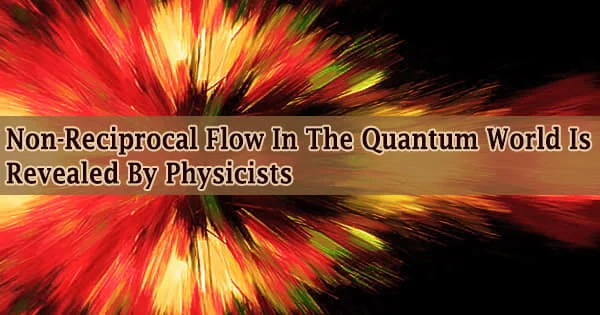Non-reciprocity can be induced at the quantum level, according to physicists from Exeter and Zaragoza, paving the door for non-reciprocal transport in the next generation of nanotechnology.
A quantum theory explaining how to create non-reciprocal flows of quantum light and matter has been established by theoretical physicists from the University of Exeter (United Kingdom) and the University of Zaragoza (Spain).
The findings could be useful in the development of quantum technologies that need the directional transfer of energy and information on microscopic scales.
Reciprocity, or traveling backward in the same direction as forward, is a fundamental notion in physics. Newton’s Law, for example, states that for every action, there is an equal and opposite response.
In each domain of physics, from mechanics to optics to electromagnetism, the collapse of such a powerful concept as reciprocity is usually connected with surprises that might be exploited for technological application.
A nonreciprocal electric diode, for example, is a microelectronics industry building piece that permits current to flow forward but not backward.
Our calculations provide insight into how one may instigate directional transport in closed nanoscopic lattices of atoms and photons with strong interactions, which may lead to the development of novel devices of a highly directional character.
Charles Downing
Downing and Zueco present a quantum theory of non-reciprocal transport around a triangular cluster of strongly interacting quantum particles in their most recent work. They demonstrate that by building an artificial magnetic field, one can alter the direction of the energy flow around the cluster, inspired by quantum theory.
The theory takes into account strong particle interactions, which cause directionality to occur at a wide range of energies, as well as the harmful effect of dissipation on the creation of non-reciprocal quantum currents.
The findings could help with the creation of quantum devices that require efficient, directional transport, as well as an additional study into strongly interacting quantum phases, synthetic magnetic fields, and quantum simulators.
Charles Downing from the University of Exeter explains: “Our calculations provide insight into how one may instigate directional transport in closed nanoscopic lattices of atoms and photons with strong interactions, which may lead to the development of novel devices of a highly directional character.”
Proceedings of the Royal Society A, a historic publication that has been publishing scientific research since 1905, has published “Non-reciprocal population dynamics in a quantum trimer.”





